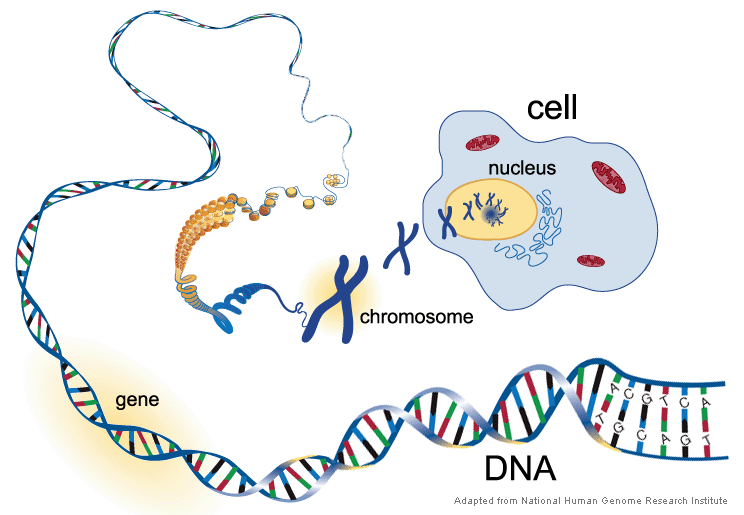OK so I'm a bit confused. Does a chromosome consist of genes and do genes consist of DNA? What about the 23 pairs in sexual reproduction? I can't remember what the pairs consist of
-
1$\begingroup$ Please show what you have found on the subject matter so far so that any responses are constructive. $\endgroup$– Behzad RowshanravanCommented May 25, 2014 at 18:26
-
$\begingroup$ The Wikipedia articles for chromosomes, genes, and DNA contain all the information you need, and are literally the first links of the respective Google searches for those words. $\endgroup$– MattDMoCommented May 26, 2014 at 3:11
-
$\begingroup$ @MattDMo This is perfectly right. But I tend to differ here: Wikipedia is nice but tends to explain things with a lot of words and sometimes in a complicated way which is hard to understand. So I think it is important to answer this kind of questions here as well, even if it is pretty basic. $\endgroup$– Chris ♦Commented May 26, 2014 at 6:37
-
1$\begingroup$ Wikipedia's articles on things like DNA and Genes are far more friendly to the Layman if you switch to Simple English. I've found that reading that first, then moving onto the English article is a good way to get a decent understanding. $\endgroup$– PeteGOCommented May 26, 2014 at 16:32
1 Answer
I will start from the small and go to the big organisational unit: All of this is constructed by DNA, the sequence of the four bases: adenosine, thymidine, cytidine and guanosine. They are abbreviated G, A, T and C and are called the letters of DNA.
Genes are organisational units formed by a specific sequence of the four "letters". Genes encode for all the proteins (in fact this is a simple view, but should be enough for the moment) and are the way the information of how the protein sequence looks is conserved.
All DNA is organised in the form of a long string of bases, which would be very long in higher organisms. To come around this problem, the DNA is organised in chromosomes, in which the DNA is wound around special proteins (the histones) and further wound up to get a compact form. The image below (from here) shows the relationship:

The 23 chromosome pairs are the 23 organisational units in humans, in which our genetic information is stored and organised. A picture of them looks like this (image from the same website as above):

Please note that the chromosomes are not X-shaped, although they might look like on the image. They are pairs of long DNA molecules, which are not connected.
-
1$\begingroup$ Pet peeve of mine - chromosomes are not X-shaped! They only look like that at one particular point in mitosis, and not even at the point where they make karyotypes. Sorry, nothing wrong with your answer, I just had to vent :) $\endgroup$– MattDMoCommented May 26, 2014 at 3:04
-
$\begingroup$ They are not, you are absolutely right. $\endgroup$– Chris ♦Commented May 26, 2014 at 5:39
-
1$\begingroup$ +1 good effort. It is not the first time this kind of basic question raises and it often get closed and we can't find them to point it out to newcomers. It is good if we can keep this post I think. $\endgroup$– Remi.bCommented May 26, 2014 at 6:27
